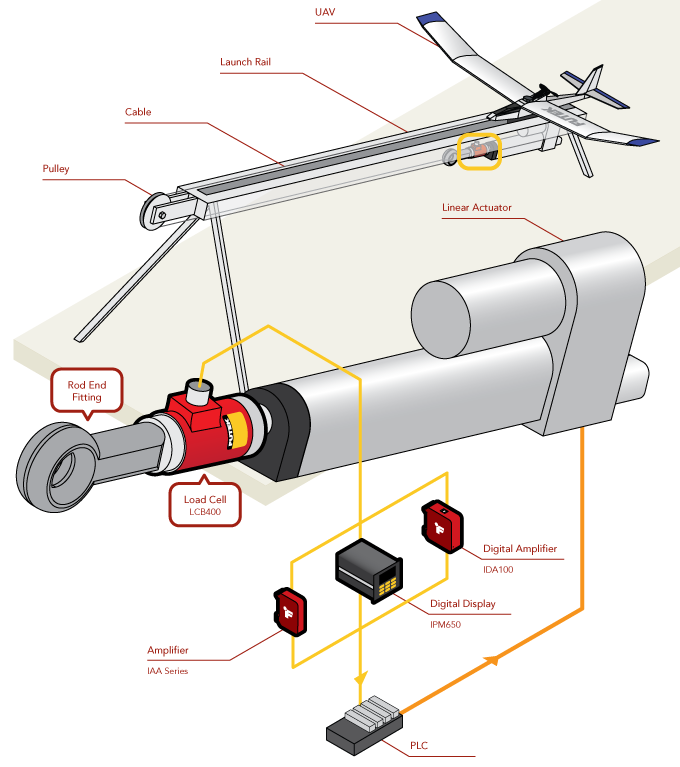 |
|
Application 172
UAV Launcher Force
Application Summary
Unmanned aerial vehicles (UAVs) come with a variety of launching capablities, such as hand launching, vertical takeoff, or runway takeoff. With the rise of ever more capable and powerful UAVs, some vehicles require launchers are needed to propel them into the air. These launchers need to apply a minimum amount of force to safely launch the aircraft into the air. To accomplish this, an LCB400 Rod End Load Cell is mated to the launching mechanism to measure the force applied to the UAV.
Products in Use
One LCB400 Rod End Load Cell paired with Instrumentation (IAA Series, IPM650, or IDA100). |
 |
|
How it Works
|



















